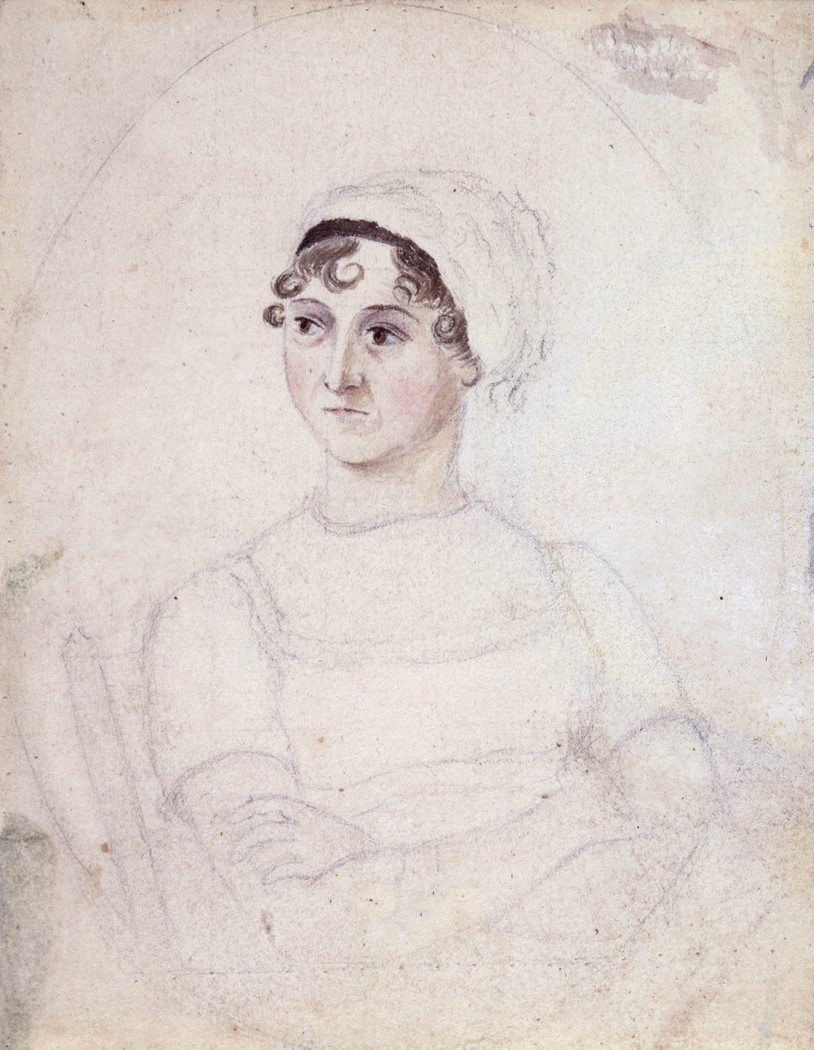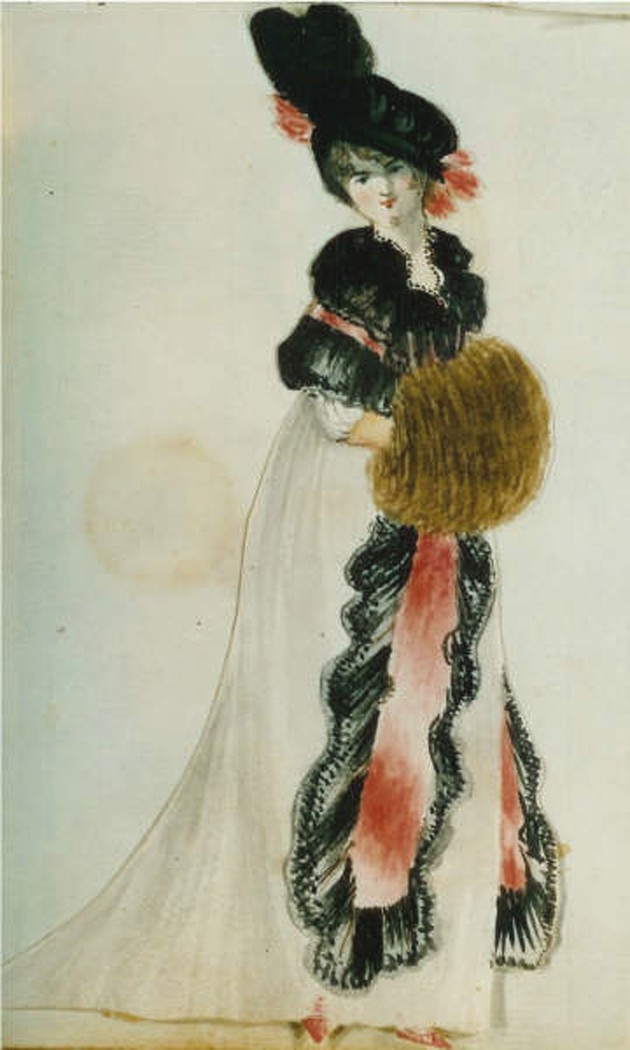Jane Austen For Dummies (13 page)
Read Jane Austen For Dummies Online
Authors: Joan Elizabeth Klingel Ray

Encouraged by her family's reception of her juvenile works and undoubtedly encouraged by her father, Jane Austen continued to touch up what she had written in her childhood and adolescence and experiment with the writing of new, full-fledged novels.
Letters were the primary form of communication between people who lived quite a distance from each other. In her lifetime, Jane Austen wrote thousands of letters, of which only about 160 remain. The earliest surviving letter by Jane Austen is dated January 9â10, 1796, just a few weeks after she had turned 20. She most frequently wrote to her sister, Cassandra. Whenever they were separated, Jane and Cassandra wrote to each other the way close sisters today would telephone or e-mail each other. She also wrote to her brothers in the navy, as well as to her other brothers. Indeed, she came from a letter-writing family in a letter-writing culture. Even some of the earliest novels were written in the form of letters between the characters, known as the epistolary style. (For more on the early novel, see Chapter 2.)
After Jane Austen started the three volumes of “Juvenilia,” she knew that she wanted to be a novelist. In 1794 and 1795, Austen began writing in the epistolary style. (Her favorite novelist, Samuel Richardson, wrote in the epistolary style, and Austen was influenced by his writings. For more information on Richardson, see Chapter 4.) Telling a novel through letters (epistles) supposedly written by varied characters allows the writer to experiment with different characters' voices. Each of us â yes, you, too â has his or her own personal tone of voice and writing style in a letter, or indeed, in anything we write. Austen experimented with the epistolary style in
Volume the Second
of her juvenile works.
Austen wrote other novels in the letter-writing style:
 Lady Susan
Lady Susan
(1794â1795):
This novel is particularly remarkable because the title character â a beautiful, conniving woman and seductress â is also a sociopath! The letters written by the various characters certainly show Austen's increasing skill in giving her characters' voices that are uniquely their own. While she put this work aside to start another, she returned to
Lady Susan
and completed it in 1803.
 “Elinor and Marianne” (1795):
“Elinor and Marianne” (1795):
Austen began a manuscript called “Elinor and Marianne” â we know it as
Sense and Sensibility,
which is what Austen titled this work when she revised it first in November 1797 and again between 1809 and 1811. While the 1795-manuscript is gone, scholars agree that she also wrote this as an epistolary novel.
 “First Impressions” (October 1796):
“First Impressions” (October 1796):
Austen wrote “First Impressions” as an epistolary novel, but later she reworked it into what would become her most famous novel:
Pride and Prejudice.
When reading this novel, note how many letters appear in it â possible holdovers from the early epistolary version. She worked on this manuscript until August of 1797. Her father read it, thought it worthy of publication, and on November 1, 1797, sent it with a letter to London's most famous publishers: Cadell and Davis. The publishers never even opened the package; they simply wrote on it “declined by Return of Post.” So for Jane, it was back to “Elinor and Marianne.”
Jane wasn't all work and no play. While her collected letters only began in January, 1796, we can reasonably assume that she enjoyed going to dances and being social from the age of 16 â the usual age for a girl's coming “out.” (For more on dancing and a young lady's coming out, see Chapter 6.)
Probably nothing is more flattering to a clever young girl than finding an adult female friend who respects your intelligence and cleverness. Mrs. Anne Lefroy, known as Madam Lefroy (1749â1804), was such a woman for young Jane Austen. The Rev. Mr. George Lefroy and his beautiful, intelligent wife lived at Ashe and were the Austens' closest neighbors.
When Jane Austen was about 11, the Lefroys invited her to play with their eldest child, Jemima, who was 7 years old. Madam Lefroy immediately recognized that young Jane was special. A great lover of literature herself, she talked seriously with Jane about her favorite poetry and plays (Shakespeare's). Jane must have shared her own reading, as well as her writing with her new, much older friend, who applauded her work. Jane soon came to see Mrs. Lefroy as a mentor who represented grace and goodness. Austen mourned deeply when Mrs. Lefroy died prematurely in 1804 in a riding accident.
The earliest existing letter by Jane Austen was written over the winter holidays of the 1795â1796 season and focused on a new acquaintance, an Irishman named Tom Lefroy. Tom was the nephew of young Jane's much admired older friend and mentor, Mrs. (“Madam”) Lefroy. (See “Having a sophisticated grown-up friend” for more on this relationship.)
Tom was a law student in London, preparing for a career at the Irish Bar. In fact, he eventually became Lord Chief Justice of Ireland. One of his professors at Trinity College, University of Dublin, wrote to his guardian and sponsor that Tom was deeply religious, highly principled, and very devoted to his goal to serve in the Irish courts (
Memoir of Lord Chief Justice Lefroy,
13â14). This young man had a professional plan and the temperament to pursue it.
In Austen's letter, she told Cassandra that she and her “Irish friend” behaved in a “most profligate and shocking . . . way [by] dancing and sitting down together” (Letter, January 9â10, 1796). As explained in Chapter 5, dancing manners required that a couple dance only twice together or they would be looked upon as a serious couple heading for engagement. So Jane was teasing her elder sister about her spending, perhaps, a suspicious amount of time with Tom at a ball. But while the two shared a few dances and a few laughs, another woman kept young love from blossoming. Her name was Mary Paul. She was the only sister of Tom's close college friend back in his Trinity days (beginning 1790). He had met her when he joined his friend's family in visits to their fine home in county Wexford, south of Dublin, Ireland. By 1797, the young Irish couple, Tom Lefroy and Miss Mary Paul, was engaged to marry, which they did two years later. Jon Spence, in his biography of Austen, which is the inspiration for a film,
Becoming Jane,
speculates that when Jane Austen and her brothers Edward and Frank stayed with Tom's uncle in London in August 1796 while traveling from Steventon to Kent, that she once again encountered Tom Lefroy. (Spence is advising on the film
Becoming Jane,
in production in Ireland in 2006.) But Lincoln's Inn, where Tom “kept terms,” as the saying went, for “studying” the law, was not in session during Austen's London visit. The term dates for 1796 show that Trinity Term ended June 15, and the Michaelmas Term only began November 6. So it's unlikely that Tom was even in London during August 1796. It's more probable that he went home to Ireland â perhaps to visit Mary Paul!

Notice that I wrote “studying” the law in quotations when discussing Tom Lefroy's time at Lincoln's Inn. Neither Lincoln's Inn nor any of the other law Inns offered formal law classes as law schools do today. All a Lincoln's Inn student back then had to do was to dine at the Inn a minimum of five days, revolving around “Grand Day,” in order to “take” a certificate. Jo Hutchings, the Archivist at Lincoln's Inn Library, kindly replied to my enquiry of April 3, 2006, that legal “training was entirely a matter of self-help â attending the courts, studying standard textbooks, reading in barristers' chambers, or working in an attorney's office” (e-mail reply, April 11, 2006). Thanks also go to Ian Warr, Information Services Administrative Office at the Law Society in London for his help on Lincoln's Inn's terms for the year 1796 (e-mail reply, April 7, 2006). Spence's book cites no records of Tom Lefroy's legal studies or time spent at Lincoln's Inn; nor does it mention using the
Memoir of Chief Justice Lefroy,
written by his son.
Perhaps Jane's inability to present a would-be husband with a dowry affected her chances of attracting a husband, as it is a fact that without a dowry, a woman's chances of marrying well, if at all, were nonexistent. (See Chapter 7 for more on dowries and other financial elements of marriage.) She did have several casual admirers, but nothing came of any of them. But the writing young woman had many female friends, including her sister, whose company she enjoyed. Attending dances and even frequently spending several nights at Manydown (the country estate of her good friends, the Biggs sisters) and other great country houses belonging to friends who were rich members of the gentry, Jane wasn't only having fun but also gleaning additional information about country-house life that she included in her novels.

Given Jane's single status, you may be wondering what she looked like. Ironically enough, she's the most famous member of her immediate family and also the only member of the family who never sat for a professional portrait or silhouette.
Some published descriptions from both Austen herself and those who knew her do exist. Here are some details that float around about Miss Jane Austen:
 In a letter written on January 25, 1801, to her sister, she asks her to buy material for a gown for her, noting that she needs enough fabric for “a tall woman.”
In a letter written on January 25, 1801, to her sister, she asks her to buy material for a gown for her, noting that she needs enough fabric for “a tall woman.”
 A niece, Anna, recalled her aunt's being “tall and slight,” with “bright hazel eyes.”
A niece, Anna, recalled her aunt's being “tall and slight,” with “bright hazel eyes.”
 Her biographer-nephew, James Edward, remembered her as being very attractive, tall and slender, with a small and nicely-formed nose and mouth.
Her biographer-nephew, James Edward, remembered her as being very attractive, tall and slender, with a small and nicely-formed nose and mouth.
 A neighbor recalled her high cheekbones and sparkling and intelligent eyes.
A neighbor recalled her high cheekbones and sparkling and intelligent eyes.
 Her brother, Henry, described her posture as “graceful” and her complexion as “of the finest texture” with naturally reddish cheeks.
Her brother, Henry, described her posture as “graceful” and her complexion as “of the finest texture” with naturally reddish cheeks.
 An old family friend said she was pretty.
An old family friend said she was pretty.
Figure 3-2 gives you an idea of what Jane looked like through her sister's eyes.
Figure 3-2: |  |
Courtesy, National Portrait Gallery
In addition, James Stanier Clarke, a talented amateur artist, spent time with Austen in 1815, when he hosted her visit to Carlton House. His small pencil and watercolor depiction of a woman (see Figure 3-3) is, very likely, Jane Austen. This conclusion is based on the study of several professional forensic artists who have compared Cassandra's portrait of her sister with Clarke's, using the technology found in police labs.
Figure 3-3: |  |
Photo by Simon Wheeler, Courtesy of Richard Wheeler